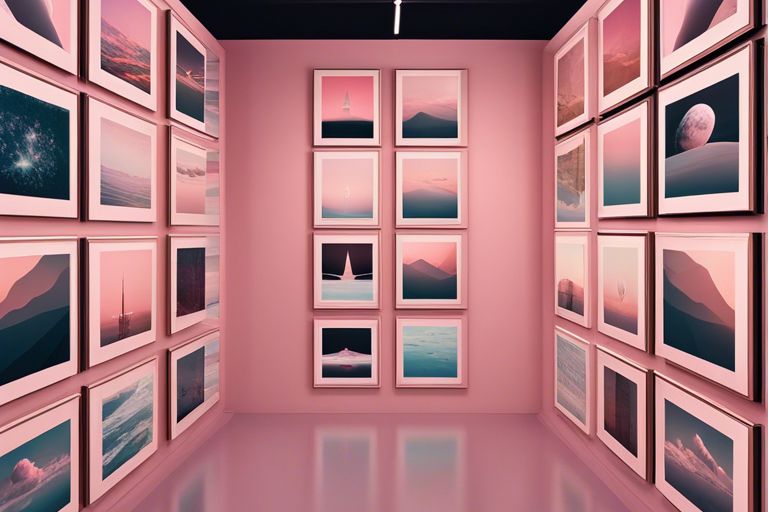Unpacking The Rise Of NFT Art – Everything You Need To Know
Most intriguing in today’s art world is the phenomenon of Non-Fungible Tokens (NFTs), revolutionizing how we create, sell, and collect art. Delve into the world of NFT art with insights on what NFTs are, why they’re soaring in popularity, and the potential pitfalls to be wary of. Discover how digital art is reshaping the traditional art market and why understanding NFTs is crucial for artists, collectors, and investors alike. Get ready to navigate the dynamic realm of NFT art with this comprehensive guide.
What is NFT Art?
Defining Non-Fungible Tokens
Your journey into the world of NFT art starts with understanding the concept of Non-Fungible Tokens (NFTs). NFTs are unique digital assets that are stored on a blockchain, making them one of a kind and irreplaceable. Unlike cryptocurrencies such as Bitcoin or Ethereum, NFTs cannot be exchanged on a one-to-one basis due to their uniqueness.
The Intersection of Art and Technology
Technology has revolutionized the traditional art market by creating a space for artists to digitize their work through NFTs. NFT art utilizes blockchain technology to authenticate and verify the ownership and originality of digital artworks, providing a secure platform for artists to showcase and sell their creations in a decentralized manner.
Tokens also enable artists to receive royalties automatically every time their work is sold, ensuring a continuous stream of income and recognition for their talent and creativity in the evolving digital landscape.
The Rise of NFT Art
Early Adopters and Pioneers
Pioneers in the NFT art world were the first to recognize the potential of blockchain technology for revolutionizing the art industry. Embracing this new medium, they paved the way for a digital art renaissance, challenging traditional notions of ownership and authenticity.
The Role of Social Media and Online Platforms
One pivotal factor in the rise of NFT art has been the role of social media and online platforms. Artists are now able to easily showcase their work to a global audience, bypassing traditional gatekeepers and establishing direct connections with collectors. This accessibility has democratized the art world, empowering creators to reach new heights of success.
Early adopters quickly recognized the potential of NFTs to transform the art market by providing a decentralized and secure way to buy, sell, and trade digital artwork. With blockchain technology ensuring provenance and scarcity, NFTs have created a new paradigm for artists to monetize their creations and engage with their audience like never before.

The Market and Economy of NFT Art
Pricing and Valuation
There’s a fascinating dynamic when it comes to pricing and valuing NFT art. Prices can vary wildly, with some pieces selling for thousands or even millions of dollars, while others struggle to find buyers. Valuation is often tied to the reputation of the artist, rarity of the work, and demand in the market.
Collectors, Investors, and Speculators
For collectors, NFT art offers a chance to own unique digital works from their favorite artists. Investors see the potential for significant returns as the market continues to grow. Speculators are attracted by the prospect of quick profits but should be wary of the volatility and risks involved.
Collectors play a crucial role in driving up the value of NFT art through their purchases and investments. While investors seek to capitalize on the potential financial rewards, speculators should tread carefully as the market is still relatively young and can be unpredictable.
The Future of NFT Art
Trends and Predictions
Future trends in NFT art suggest an expansion of the market into different industries beyond visual art, potentially incorporating music, literature, and even fashion. The technology behind NFTs is expected to evolve, allowing for more sustainable and eco-friendly options for creators and collectors.
Challenges and Controversies
An ongoing challenge in the NFT art world is the issue of copyright infringement and intellectual property rights. Critics raise concerns about the environmental impact of blockchain technology and the carbon footprint of NFT transactions.
Understanding the future of NFT art requires a balanced approach that considers the potential for innovation and creativity alongside the need for ethical and sustainable practices. As the market continues to grow and evolve, finding ways to address these challenges will be crucial for the long-term success and credibility of NFT art.
To wrap up
To wrap up, NFT art is revolutionizing the art world by providing artists with new opportunities to showcase and sell their work. Understanding the basics of NFTs, including their benefits and potential pitfalls, is crucial for anyone interested in this emerging trend. By staying informed and engaging with the growing NFT art community, individuals can navigate this innovative space and potentially discover new ways to support and appreciate art in the digital age.
FAQ
Q: What are NFTs?
A: Non-Fungible Tokens (NFTs) are unique digital assets that represent ownership of a particular item or piece of content using blockchain technology.
Q: How does NFT art differ from traditional art?
A: NFT art is digital art that is tokenized using NFTs, making it unique, ownable, and easily transferable compared to traditional physical art.
Q: What has contributed to the rise of NFT art?
A: Factors such as the increasing acceptance of digital art, blockchain technology advancements, and the desire for exclusive ownership have all contributed to the rise of NFT art.
Q: How do artists benefit from creating NFT art?
A: Artists can benefit from creating NFT art by receiving royalties on secondary sales, reaching a global audience, and having more control over the distribution of their work.
Q: Are there any environmental concerns associated with NFT art?
A: Yes, the energy consumption required for minting and trading NFTs has raised concerns about the environmental impact of NFT art, prompting discussions around sustainability in the industry.
Q: How can someone start collecting NFT art?
A: To start collecting NFT art, individuals can create a digital wallet, connect it to an NFT marketplace, and then browse, bid on, or purchase NFT art pieces from various artists.
Q: What is the future outlook for NFT art?
A: The future of NFT art is still evolving, with possibilities for increased integration in various industries, innovations in technology, and continued exploration of the intersection between art and blockchain.
![]()













